#trachypithecus
Explore tagged Tumblr posts
Text


White-headed Langur (Trachypithecus leucocephalus), family Cercopithecidae, endemic to Guangxi, China
CRITICALLY ENDANGERED.
Photograph by VCG via: China Plus Culture
1K notes
·
View notes
Text

East Javan Langur
#east javan langur#langur#Trachypithecus auratus#Primates#Haplorhini#Simiiformes#Cercopithecidae#Trachypithecus#upl
140 notes
·
View notes
Text


East Javan Langur (Trachypithecus auratus) - (c) Saritawolf - please do not repost
37 notes
·
View notes
Text

A dusky leaf monkey (Trachypithecus obscurus) sits in a tree in Kaeng Krachan National Park, Thailand
by Eric Zhou
#dusky leaf monkey#langurs#monkeys#trachypithecus obscurus#trachypithecus#cercopithecidae#simiiformes#haplorhini#primates#mammalia#chordata#wildlife: thailand#wildlife: asia
158 notes
·
View notes
Text

Gee’s Golden Langur (Trachypithecus geei)
54 notes
·
View notes
Text
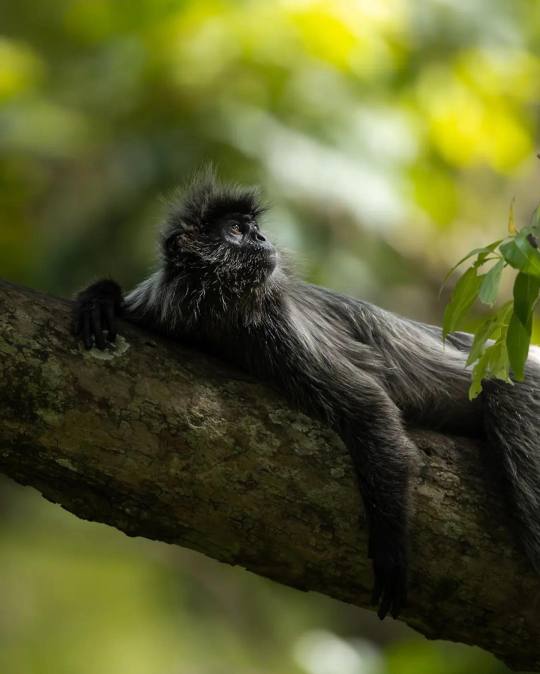

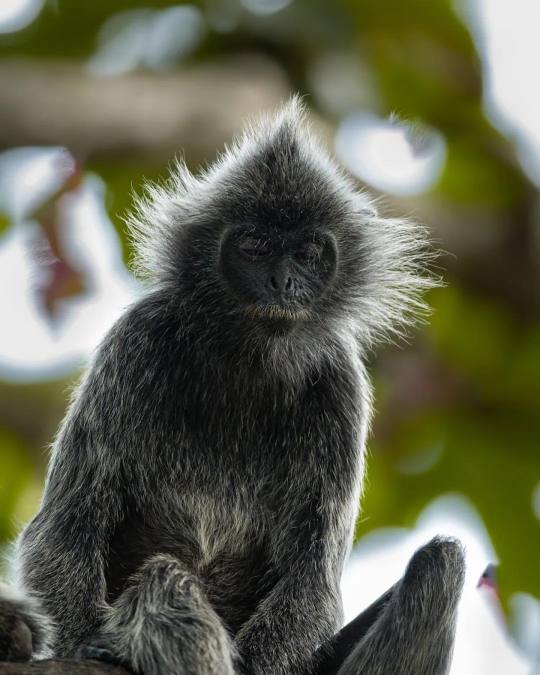
" Selangor Silvered Langor (Trachypithecus selangorensis) "
//© Tharma Seelan Silivam
#Malaysia#nature#Portraits#Wildlife#Monkeys#Silvered Langor#Trachypithecus Selangorensis#aesthetics#wanderlust#explore#follow#discover
31 notes
·
View notes
Note
all kidns of strange and wonderful beafts in the world. how do we even know them all. wh
That’s the beauty of it: we don’t know them all! We’re constantly discovering new species! Granted, some of these discoveries weren’t completely unknown to science and were only misidentified as a different animal, but they’re still pretty cool nonetheless. Here are some mammals that were discovered in the past few years:

The Popa langur (Trachypithecus popa), first described in 2020.


The northern greater glider (Petauroides minor) and the central greater glider (Petauroides armillatus), upgraded from subspecies of the southern greater glider (Petauroides volans), to their own species in 2020.

The Ramari’s beaked whale (Mesoplodon eueu), described from a single beached specimen in 2021!
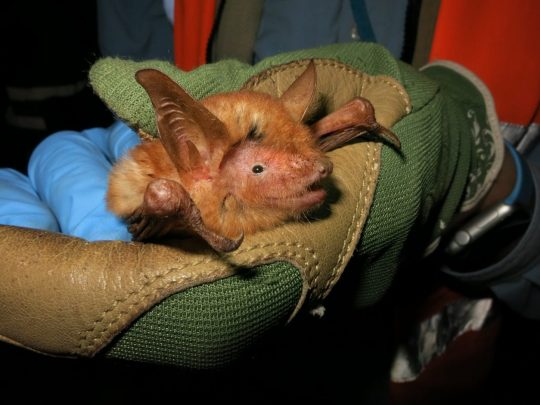
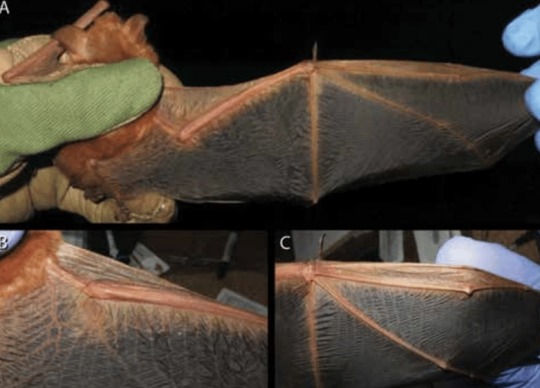
The striking Halloween colored Nimba myotis bat (Myotis nimbaensis), described in 2021.

The southern maned sloth (Bradypus crinitus), first described in 2022.

The Benin tree hyrax (Dendrohyrax interfluvialis), first described in 2022.


The eastern Mindanao gymnure (Podogymnura intermedia) and the Kitanglad gymnure (podogymnura minima), first described this year, in January 2023.
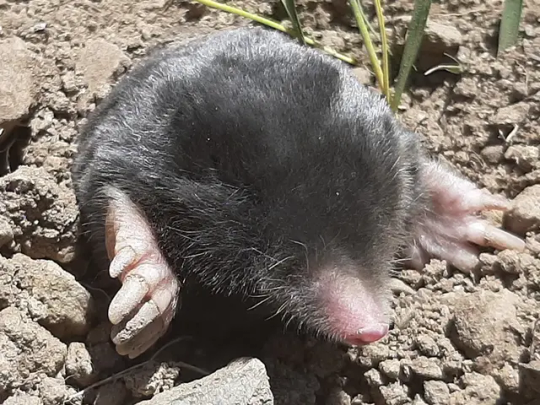
And the Talpa hakkariensis mole, described just last month in August 2023!
1K notes
·
View notes
Text

The dusky leaf monkey (Trachypithecus obscurus),
also known as the spectacled langur or the spectacled leaf monkey, is a species of primate in the family Cercopithecidae. It is found in Peninsular Malaysia, Myanmar and Thailand, and can occasionally be found in Singapore. During the day, these small, folivorous primates divide in sub-groups and forage for vegetation and fruit throughout the tropical forests. According to the IUCN, the dusky leaf monkey's population is declining due to habitat loss, poaching, and anthropogenic land use, which prompted the IUCN to classify the species as endangered in 2015. -Wikipedia
105 notes
·
View notes
Text


This animal was requested!
#endangered#endangered animals#endangered species#François' langur#southwestern china#northeastern vietnam#mammalia#mammal#mammals#asian mammals#primates#haplorhini#simiiformes#old world monkey#langur#animal polls#poll blog#my polls#animals#polls#tumblr polls
37 notes
·
View notes
Text
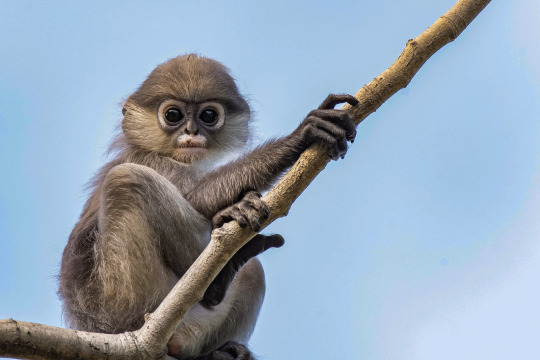
Dusky Leaf Monkey (Trachypithecus obscurus) in Ban Don Sai, Changwat Prachuap Khiri Khan, Thailand
78 notes
·
View notes
Text

Silvery lutung (Trachypithecus cristatux)
This arboreal monkey is found in wetland forests, including mangroves, coasts, rivers, and swamps, across several Indonesian islands. They are far more specialised for eating plants than most primates, with ridged teeth and a multi-chambered stomach. Juvenile silvery lutungs are bright orange, a stark contrast to their adult grey colour.
#markhors-menagerie#primates#old world monkeys#monkeys#animal facts#fun facts#animals#biology#langur#silvery lutung
22 notes
·
View notes
Note
Hey, do you have any monkies? I'm collecting a lost for a very knowledgeable 6yo to research, so if you have any cool looking ones, he'd love them! Thanks :)
I might have a few cool monkeys for you!

Black-footed Gray Langur (Semnopithecus hypoleucos), family Cercopithecidae, southern India
photograph by @shaazjung

White-headed Marmoset (Callithrix geoffroyi), family Callitrichidae, eastern Brazil
Photograph by Luis Palacios

Mandrill (Mandrillus sphinx), male, family Cercopithecidae, Gabon
photograph by @mogenstrolle

Lion-tailed Macaque (Macaca silenus), family Cercopithecidae, endemic to the Western Ghats of India
photograph by Sandeep Dutta

Red-shanked Douc (Pygathrix nemaeus), family Cercopithecidae, found in Laos, Viet Nam, and Cambodia
ENDANGERED.
photograph by Miriam Blas Nombela

Golden Monkey (Cercopithecus mitis kandti), family Cercopithecidae, Rwanda
Subspecies of the Blue Monkey.
photograph by m107791


White-faced Saki (Pithecia pithecia), males, family Pitheciidae, found in the central area of northern South America
photographs: Jindřich Pavelka & Skyscraper


White-headed Langur (Trachypithecus leucocephalus), family Cercopithecidae, endemic to Guangxi, China
CRITICALLY ENDANGERED.
Photograph by VCG via: China Plus Culture
143 notes
·
View notes
Text

Gee's Golden Langur
#gees golden langur#langur#Trachypithecus geei#Primates#Haplorhini#Cercopithecidae#Trachypithecus#upl
32 notes
·
View notes
Text

East Javan Langur (Trachypithecus auratus) - (c) Saritawolf - please do not repost
2 notes
·
View notes
Text

National Geographic
· Un langur o lutung de cabeza blanca (Trachypithecus poliocephalus) acicala a un langur joven en un árbol del Ecoparque Chongzuo. Se distribuye a lo largo de su región autóctona, Guangxi, que está al sudeste de China. Mide entre 50 y 60 centímetros y puede alcanzar los 20 kilos de peso. Es diurno y vive principalmente en los árboles, en grupos de 4 a 5 individuos. Se estima que la fecha de apareamiento tiene lugar en abril y, como resultado, las hembras dan a luz a una sola cría. Desde hace más de 20 años, este animal está incluido en la lista roja de la UICN como “especie en peligro crítico de extinción”. Esto se debe a que, según los cálculos que han hecho los expertos, su población actual no supera los 250 langures adultos. 📸 Jed Weingarten | National Geographic
1 note
·
View note
Text
Golden Langur Trachypithecus geei — Palm Oil Detectives
The regal, striking looking Golden Langur is also known by the common names Gee’s Golden Langur. They are the most endangered primate species in …Golden Langur Trachypithecus geei — Palm Oil Detectives

View On WordPress
0 notes